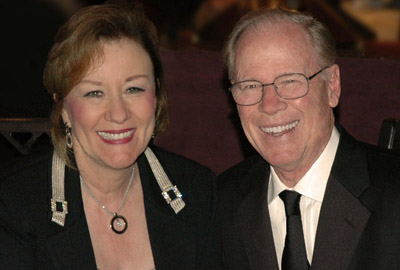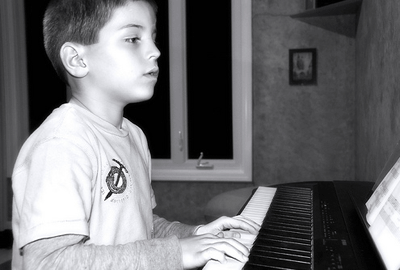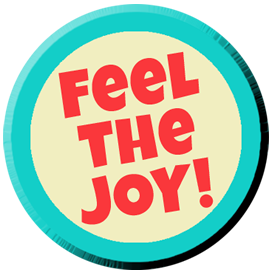When was the last time you talked to a dead person?
Given the readership of this blog, I wouldn’t be surprised if more than a handful of you said, “Yesterday.”
So here’s another question: When was the last time you talked to an entire collection of dead people who inspired you to expand your conception of who you are?
Again, I suspect that more than a handful of you are nodding in amusement.
A portion of the amused nodders, myself included, are a group known as FOAs, or Friends of Abe.
And who the heck is Abe?
Well, first of all, Abe is short for Abraham, and Abraham is plural. “Abraham” is the name of a group of entities channeled by Esther Hicks.
For those of you who are about to jump ship because I mentioned the “C” word, hear me out. It’s been said that Mozart channeled his symphonies. Many creative types describe the experience of creation as one of channeling ideas and information from an unseen source. So there’s that.
It’s also true that the phenomenon of channeling is controversial for good reason.
“Just because they’re dead doesn’t mean they’re smart.” I heard this years ago and it still stands true.
Caution and circumspection are always advised when evaluating the work of a channeled entity. Or any entity, for that matter.
Does the information make sense? Is it useful? Does it shed new light on old problems?
Bottom line, I don’t know exactly how Esther Hicks receives the information that comes out of her mouth. All I know is that the information has proven to be incredibly helpful and enlightening to me and boatloads of other people.
And that’s why I’m a Friend of Abe.
There are 3 things in particular I’ve learned from my buddy, Abe.
These 3 things have expanded my understanding of spiritual growth in a way that is profoundly practical. Which, by the way, is one of my favorite things about them. I’ve applied their teachings to every area of my life, and have witnessed both short-term and long-term positive results.
So here they are, My 3 Favorite Teachings of Abe:
1. Life is Eternal
Yeah, yeah, yeah. We’ve heard it before. It’s one thing to say that life goes on and on. But when you’re hearing a group of non-physical beings talk about life after death, the concept of immortality becomes a lot more immediate.
For me, listening to Abe has taken away my fear of death. As they like to say, “We’re as dead as it gets.”
2. The Emotional Component of Spiritual Growth
Abe shows us how to use emotions as a barometer in our development. They teach that our emotional state is a gauge that indicates how aligned we are with our Higher Self in any given moment. Not only that, they give us tools to narrow the gap.
Feeling awesome? You’re aligned. Feeling crappy? You’re not aligned.
In the case of the latter, Abe teaches that recognizing this lack of alignment is the first step. The next step is allowing yourself to participate in activities – both internal and external – that kick you back into alignment.
Here’s an example: Let’s say you have a less-than-cheery interaction with a co-worker. Your knickers are in a serious twist and you can’t shake your annoyance.
What Would Abe Do?
First of all, recognize that the state of annoyance signifies a lack of resonance with your Divine nature. Does the Divine view your co-worker as a inept, uninformed twit?
It does not.
You do, though. And this view is clashing with your Divine nature. To get back in alignment, there are a couple of things you can do.
One is to focus on the positive aspects of your co-worker. Yes, it may feel like there are none at first, but with a little practice, your view of the twit will start to shift.
Or, if changing your view of the twit seems impossible, another approach is to place yourself in a situation that makes you happy: listen to music, call a friend, take a break and breathe in some fresh, sunny air.
Before long, you’re back in alignment and maybe, just maybe, this shift will allow you to see your twit-ish coworker in a more reasonable light. At the very least, you’ve used your awareness of your moods to move to a more positive place.
3. Go with the Flow
My favorite concept of Abe’s is their Upstream/Downstream metaphor. They teach that the flow of our Divine Self is strong and mighty, like a raging river.
When we allow ourselves to “go with the flow,” we feel good.
Yet most of us are taught to push against the stream. We’re taught that only stress and struggle will give us what we want.
The Upstream/Downstream metaphor can be used in any moment to evaluate the best course of action. Which possibility feels more downstream? It may sound simplistic, but I’ve found this to be a powerful tool.
I can still remember the first time I actively applied the Upstream/Downstream concept to my life.
I’d been asked to play a modern classical piece for a benefit concert. I agreed to do it because I supported the cause and wanted to help. Yet the more I practiced the piece, the less I liked it.
It became a vicious circle – my lack of enjoyment of the piece made me disinclined to practice it. And yet I needed to practice in order to learn it.
In talking out my dilemma with a friend, I realized that the entire endeavor was upstream.
I was playing a style of music I didn’t like. I was pushing myself to do something that gave me no enjoyment – and believe me, as a musician, that lack of enjoyment is felt by the audience.
Luckily, the concert was still in the development phase at that point, and they had plenty of time to get someone else to play the piece. (Though interestingly enough, the second person eventually declined as well.)
My decision to stop “bucking the current,” as Abe likes to say, was a key moment for me.
It was the beginning of my own mini-musical-renaissance. It was the beginning of a period in which I began to draw in a wealth of musical experiences – experiences that were totally in alignment for me.
And it’s all because I refused to play upstream.
So, there you have it! There are many awesome and amazing things about Abe, and this list is just a beginning.
If you want more information about the Abraham-Hicks work, you can visit their website. Also, given my great love for them, I often share personal insights I’ve gleaned from their teachings. Other Abe-inspired posts can be found here:
Battling My Inner Task Master: Round 379
Feeling Blue? Try the Turbo-Rambo Appreciation Assault!
How I Survived the Spiritual Retreat from Hell
So the next time you’re “bucking the current,” just remember this classic tune:
Row, row, row your boat
Gently down the stream.
Merrily, merrily, merrily, merrily.
Life is but a dream.
What are your experiences with upstream and downstream? How have your emotions signaled your alignment – or lack thereof?












I adore Abraham-Hicks.. After 11 years of following them, I’m still amazed at the depth and breadth of their teachings. I blog about them and we hold Abe groups at our home, where we view their videos and discuss.
Your writing and blog lay-out are wonderful, Z. Keep up the fun!
Hi Karen,
Thanks for stopping by. Great to hear from you!
I checked out your site – you have a wealth of information on Abe, presented in a light, informative style. Great work!
Glad to know that you’re spreading the good news about Abe to the world. They really are amazing, aren’t they? Like you, I continue to be amazed at how much I continue to learn from them.
Come back anytime!
XOZ
Abe!!!! Love how we’ve nicknamed them – LOL! They are at the top of my spiritual mentor list too. They taught me allowance, how to accept life and people unconditionally – that there is a perfection and innocence to it all. No matter what scenario is brought to them, they always manage to reframe it into something uplifting without doing “spiritual bypass”. Love their sense of humor too. Thanks for the Row, Row, Row your boat song – it helps! Going with the flow….
Hi Marcy,
Abe!!! It’s all about Abe.
I agree with you – one of my favorite things about them is the gentle view they lend to everyone who comes to them with a question. Like you say, they don’t discount the discomfort (with spiritual bypass), but they also don’t take it too seriously either.
Indeed, Abe’s sense of humor has been profoundly illuminating to me. It wasn’t until after I’d been listening to them for a few years that I noticed how much funnier they were than other spiritual teachers I’d heard in the past. More and more, I’m seeing that cultivating this light, gentle view is really what it’s all about.
Dude!
XOZ
What I love about your blog, Z, is that you speak my language! And, I’m noticing from your followers that I’m in good company. Daily I have chats with my ancestors. I’m convinced they keep me out of trouble–or get me in just far enough to learn something. And yes, I believe my music is channeled, probably my writing too. Singing to the choir here–and loving every minutes of it. Thanks for being you.
Hi Jo,
Glad to be speaking the same language as you! 🙂
I agree with you that there is a lot to be learned from the invisible ones. Even when there’s a little trouble involved!
And I would absolutely say that your music and writing are channeled. Indeed, I find that creative expression is one of the best forms of spiritual practice around!
Thanks for stopping by,
XOZ
Hi Z,
I just wanted to say I appreciate your blog & perspectives 🙂 I discovered Abe in 2010 and rediscovered resonance with what I already knew. I’m at a point right now where I have some contrast for the first time in a long time and I’m hoping that I will soon start to feel my way downstream. One of my strategies is to distract myself with comedy :)!
I look forward to reading some of your past blog posts. Thank you for creating this space
Keep chillin & being you!
🙂 Helena
Hello Helena,
Wonderful to have you here!!
I love that – distracting yourself with comedy! I think Abe would approve. 😉
I feel the same way you do – discovering Abe was like reacquainting myself with a lot of things I already knew. And some new things too!
I know that you will find your way downstream – and have fun in the process.
Come back again!
XOZ
For sure life is eternal……….Life is a celebration of birth; death is a celebration of life; birth is a celebration of death………a thought by me some years ago.
Thank you for sharing and I speak with friends in their crossing phase all of the time. ::))
Hi Michael,
I once heard someone say that people on the other side talk about their date of death as their birthday. It all depends on how you look at it! It really changes everything when you view life with that perspective. Thanks for your comment!
XOZ
Dear Z,
I’m a big fan of Abraham, too, and have followed them for years! I agree with your choice of top 3 favorite teachings. I especially love the use of what we feel as a tool, a gauge indicating whether we are flowing or bucking the current for our well being! Ernest Holmes may be communicating through Abe – sure sounds like it to me!
Love your blog!
Hi Jan,
Great to see you here! Abe is awesome – I’m happy to know that you are a fan as well. I agree with you that the addition of emotions as a tool in spiritual development is extremely valuable. I also like what you say about Holmes and Abe. After all, Abraham calls themselves a group of teachers – Holmes very well may be part of that group. What a cool thought!
Come back again any time!
XOZ
Hey Z,
Ok, it’s official! I am writing my first ever FAN mail. Melissa was right saying you know how to write!
As for WWAD? I get a dose of Abe daily! Love them!
But it all goes back to the ONE thing, doesn’t it? Ester couldn’t get the info she gets if we were not all ONE with the Infinite Intelligence (which I heard her define Abraham as).
What Abe taught me was that downstream thing does put you in a vortex..a place where dreams come true like in Oz beyond the rainbows and my beyond my best dreams. As long as I stay out of judgement, in forgiveness and gratitude, in short, in alignment- viola, Glenda the Good Witch of the Vortex gives me anything I request!
Clicking my ruby slippers!
Your newest fan from Eugene!
River
Hi River!!
So great to see you here. Glad that you stopped by! 🙂
I like your thoughts about Abe – the reminder of the vortex, and how powerful that is. And the reminder that Esther, like all of us, is one with Infinite Intelligence. Yes!
I hope that you’re having a good “re-entry” time after the retreat.
Keep in touch!
XOZ